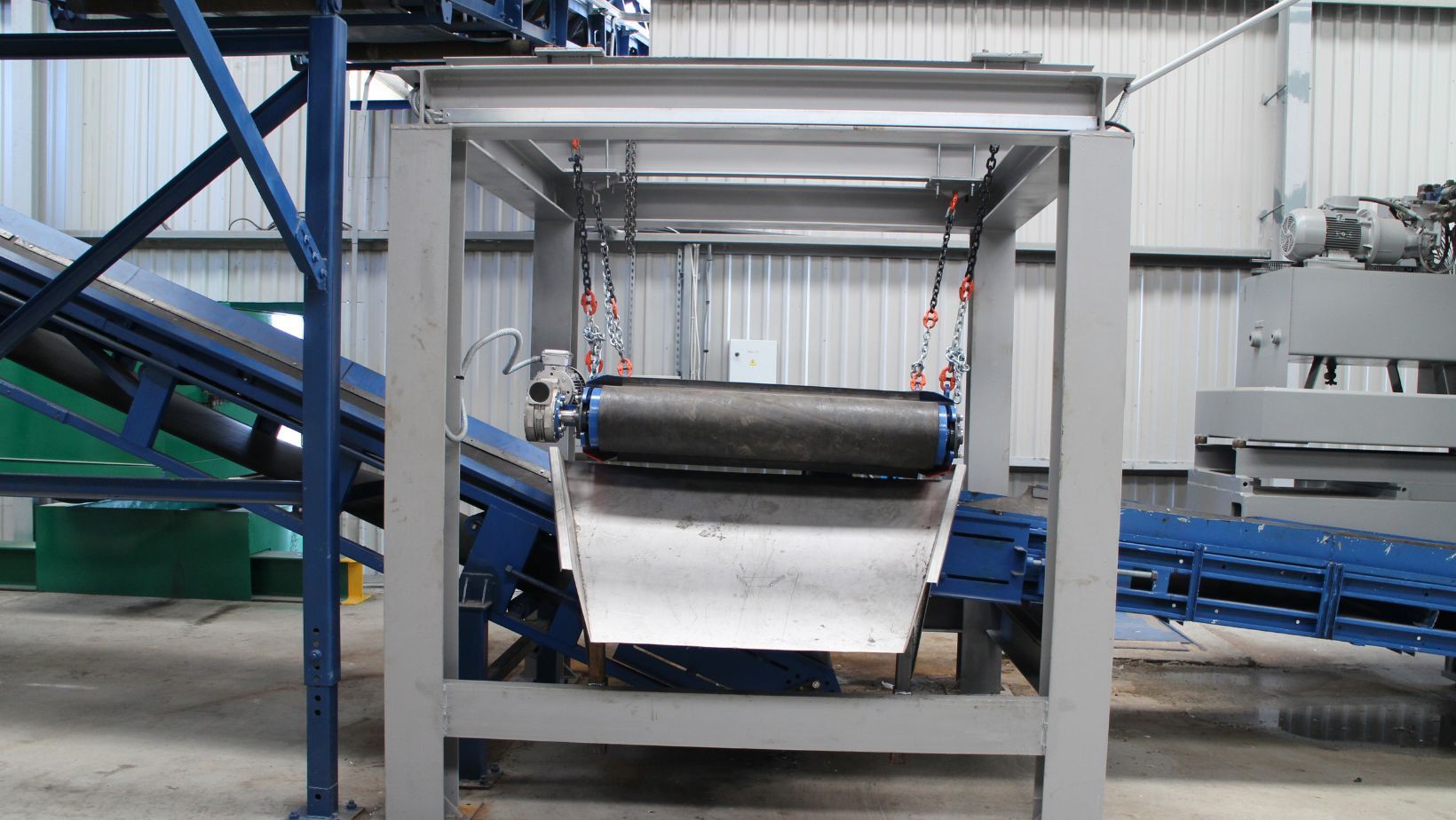Industrial Magnets in Metal Detection and Separation
Industrial magnets play a pivotal role in material detection and separation processes. These powerful magnets, often made from materials like neodymium, ferrite, or samarium cobalt, are essential components in various industrial applications.
In metal detection, they serve as the critical element that identifies and extracts unwanted metallic particles from bulk materials such as food products, mining ores, or recycled materials, ensuring product purity and safety.
In the context of material separation, industrial magnets are employed to efficiently segregate different materials based on their magnetic properties. This technique is invaluable in recycling centres, where magnets can isolate ferrous materials from non-ferrous ones, contributing to more sustainable waste management practices. The versatility and precision of industrial magnets in material detection and separation underscore their indispensable role in enhancing the quality and efficiency of numerous industrial processes.

What Are Ferrous Materials?
Ferrous and non-ferrous materials are fundamental categories in the world of materials science and industry. The key distinction between them lies in their response to magnetic fields.
Ferrous materials, such as iron and steel, contain iron as a primary component and exhibit strong magnetic properties. These materials can be easily attracted to magnets and are susceptible to corrosion, making them suitable for applications like construction and manufacturing of industrial equipment.
Non-ferrous materials, on the other hand, lack significant iron content and are generally non-magnetic. Common examples include aluminium, copper, brass, and various alloys. Non-ferrous materials are prized for their corrosion resistance, lightweight properties, and electrical conductivity, making them ideal for applications like electrical wiring, aerospace components, and architectural detailing.
Understanding the distinction between ferrous and non-ferrous materials is crucial for selecting the right materials for specific applications, ensuring optimal performance and longevity.
What Are The Benefits of Implementing Industrial Magnetic Technology
Implementing industrial magnetic technology in your business offers a multitude of key benefits.
- Firstly, it significantly enhances efficiency and productivity in various processes. Industrial magnets are adept at automating material handling and sorting tasks, reducing manual labour, and minimising the risk of human error. Moreover, they play a crucial role in metal detection and separation, ensuring product quality and safety in industries like food processing, mining, and recycling.
- This technology also contributes to cost savings by reducing waste and increasing the yield of valuable materials.
- Additionally, industrial magnets are known for their longevity and low maintenance requirements, providing a reliable and durable solution for your operations. They are eco-friendly, promoting sustainable practices by aiding in the separation of recyclable materials and reducing environmental impact.
In summary, incorporating industrial magnetic technology into your business not only boosts efficiency and quality but also results in cost-effectiveness and sustainability, making it a wise investment for long-term success.
Types of Industrial Magnetic Technology
These industrial magnetic technologies play a crucial role in various sectors, from manufacturing and materials handling to healthcare, offering a wide range of applications that improve efficiency, product quality, and safety across diverse industries.
- Magnetic Separators: These devices use strong magnets to separate ferrous and non-ferrous materials from bulk materials, ensuring product purity and safety.
- Electromagnetic Lifters: These powerful magnets are used for lifting and moving heavy ferrous materials in applications such as steel manufacturing and scrap yards.
- Magnetic Conveyors: They utilise magnets to transport materials along production lines, enhancing automation and reducing the need for manual labour.
- Magnetic Chucks: Commonly found in machining operations, magnetic chucks securely hold ferrous workpieces during machining processes, improving precision and efficiency.
- Magnetic Filters: These devices remove fine ferrous particles from liquids, ensuring the quality and longevity of hydraulic fluids, coolants, and other liquids used in industrial processes.
- Magnetic Sweepers: Magnetic sweepers are effective tools for collecting metal debris and contaminants from floors and surfaces in warehouses, construction sites, and manufacturing facilities.
- Magnetic Grates and Tubes: Used in hoppers and chutes, they capture ferrous contaminants from flowing materials like granules, powders, and grains, preventing equipment damage and ensuring product quality.
- Magnetic Pulleys: These pulleys are used in conveyor systems to remove tramp iron from materials like coal, minerals, and aggregates, safeguarding downstream equipment.
- Magnetic Couplings: Employed in machinery and pumps, magnetic couplings transmit torque through magnetic fields, eliminating the need for physical seals and reducing the risk of leaks.
- Magnetic Brakes and Clutches: These devices control the motion of rotating equipment, providing precise and adjustable stopping or coupling of shafts in industrial machinery.
- Magnetic Therapy: In healthcare, magnetic technology is used for therapeutic purposes, such as pain relief and healing